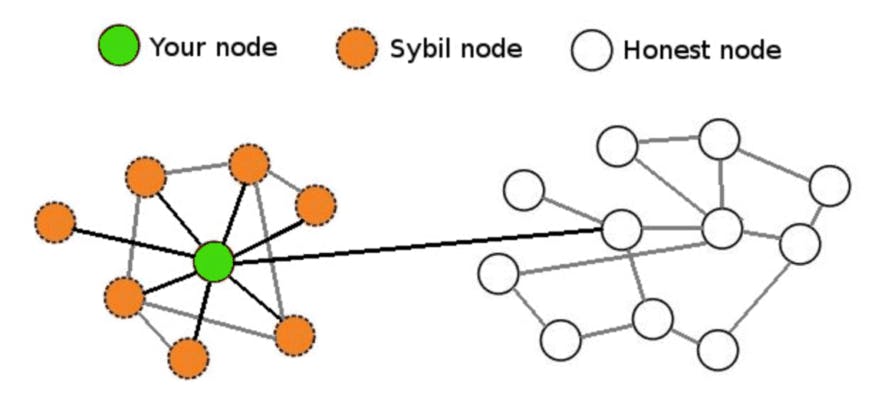Table of contents
It is misinterpreted that blockchain is fully secured and doesn't lead to any attack on it.
However, this is not true there are several cases where we can see the decentralized blocks get hacked. In this blog, we will discuss 2 major attacks on blockchain technology
51% ATTACK

51% attack refers to an attack on blockchain by a group of miners who own more than 50% of blocks in the transactions. Owning 51% of the nodes on the network gives the controlling parties the power to alter the blockchain.
Examples of 51% attack
Bitcoin Gold, 2018: Bitcoin Gold, a cryptocurrency originally based on Bitcoin, suffered an attack that led to $18 million in theft from cryptocurrency exchanges.
Ethereum Classic, 2019: This crypto based on the Ethereum blockchain experienced a 51% attack that led to roughly $1.1 million stolen.
SYBIL ATTACK

In a Sybil attack, an entity has numerous fake identities on a blockchain for malicious reasons.
The main concern with a Sybil attack is that it can create enough fake identities to completely overwhelm all the honest network nodes. A few false identities might seem relatively harmless, but as more develop, they can greatly harm a network.
Example of Sybil attacks
The Tor attack in 2014 was one of the earliest Sybil Attacks against a P2P network. Tor is a peer-to-peer network that facilitates private conversations.
The attackers assailed it that year to discover the locations and identities of some Tor users. In the unofficial post-mortem report, the Tor team found some facts that the attack was a Sybil Attack.
The attacker controlled about 115 relays from a single IP address. This means that only one person was in charge of the numerous relays. The attacker was able to get some unduly large influence over the network and access some pieces of information.

